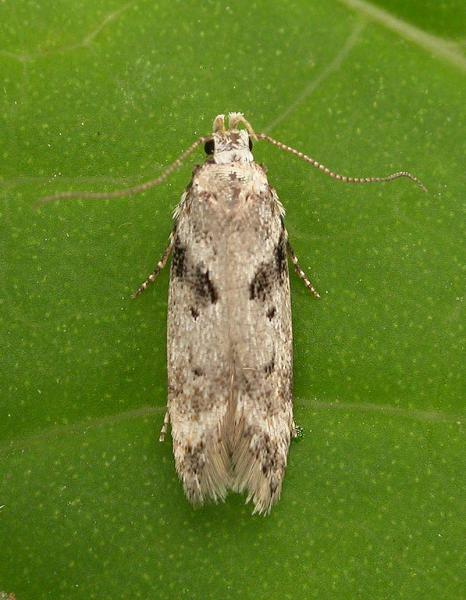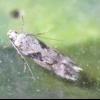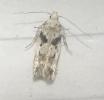35.133 Caryocolum blandella (Douglas, 1852)
Status and Distribution
Local to locally common in much of England, Wales and the Isle of Man. Very local north of the Midlands on the west side of England, the extreme southern parts of Scotland, in some southern and eastern parts of Ireland and the Channel Islands. There is a single record from Kintyre in western Scotland in 2006. Also noted in Angus on 4th August 2024, the first modern record on the east coast of Scotland.

Provisional map
Foodplant and Larval Feeding Signs
Stellaria holostea (greater stitchwort), see plant distribution map.
Initially mines the leaves, later in spun shoots and finally within the seed capsule.
Habitat
In shaded situations in deciduous woodlands, hedgerows and banks.
In Europe it is reported as having a particular preference for woodland with oaks.
Finding the Moth
Larva: commences as a leaf-miner (one report indicating it feeds along the midrib) in early Spring but more readily located from May onwards feeding within a spun shoot or a flower bud; completes its feeding within seed capsules.
Adult: rests on tree trunks during the day and comes readily to light.
Similar Species
This species bears only a superficial resemblance to the following but care should be taken to exclude these species if the specimen is particularly pale or worn, when dissection would be recommended.
Caryocolum blandulellais smaller (8.5-11mm wingspan as opposed to 9.5-14.5mm in C. blandella), lacks a distinct row of terminal spots, has a more regular black costal block which normally avoids overlapping the first black spot in the middle of the forewings. This species appears to be restricted to a few sand dunes in south-east England and south-west Wales.
Caryocolum blandelloides is generally smaller at 10-12mm wingspan but with quite a lot of overlap, shows less contrast in the markings, the black patch on the costa is half as wide and the antennae are less distinctly ringed with light and dark. The habitat and distribution of C. blandelloides (large coastal dunes in northern Scotland) should also exclude any chance of confusion.
C. proxima is generally smaller with a wingspan of 9-11.5mm and has the light rings on the tibia of the forelegs and mid-legs with light red scales. Confusion is only likely with paler or particularly worn specimens of this species.
In comparison to C. huebneri and C. kroesmanniella, C. blandella lacks the fuscous-tipped scales present on the head and thorax and has the costal and plical spots obscured by the dark fuscous bar. C. kroesmanniella is generally of similar size to C. blandella but has less strongly contrasting markings and has an obvious break in the black streak at one quarter on the forewing.
Single brooded from late June to early September.
Earliest: 3rd June 2011 (VC33)
Latest: 17th September 1988 (VC66). One exceptionally late record (9th Ocober 1994) has also been reported from VC66



